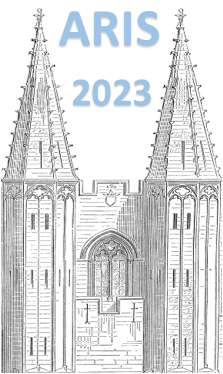Orateur
Description
The study of $T=1$ triplets plays an important role in our understanding of isospin physics. A linear dependence of the proton matrix elements ($M_p$) with respect to isospin projection $T_Z$ indicates the isospin purity of states, an effect that has been studied and observed for triplets of 22 $\leq$ $A$ $\leq$ 50 [1]. As measurements of reduced electromagnetic transition probabilities become available for heavier $T_Z=-1$ nuclei, some studies suggest that beyond-Coulomb isospin symmetry-breaking (ISB) effects affect this observable in mirror nuclei [2].
In this work, we investigate all even-even $T=1$ mirrors with 42 $\leq$ $A$ $\leq$ 98 within the nuclear-density-functional-theory (nuclear-DFT) approach and analyse systematic properties of the obtained $B(E2: 0^+ \rightarrow 2^+)$ values. For this purpose, we use the numerical software HFODD [3] to identify the deformed minima and to perform angular momentum projection. In addition, we employ the Generalised Bohr Hamiltonian [4, 5] to study effects of the quadrupole collectivity. For both methods, we utilise the Skyrme energy density functional with the UNEDF1 parameterisation [6]. We compare the obtained results with the available experimental data. Our results show significant differences between the mirror pairs without considering beyond-Coulomb ISB effects.
Furthermore, for the $A=70$ and $A=78$ triplets, including the odd-odd $N=Z$ nuclei, we perfom calculations utilising a variety of nuclear-DFT parameterisations. The $A=70$ triplet is the heaviest one for which the $B(E2)$ are known for all members, whereas the $A=78$ triplet is the subject of interest for further experimental measurements. To obtain the $B(E2)$ of the odd-odd $N = Z$ nuclei, we performed the angular-momentum projection of the Hartree-Fock-Bogoliubov states with pair-blocked configurations. Our results allow for a full investigation of the linearity of $M_p$ in function of $T_z$.
References:
[1] A. Boso et al., Physics Letters B 797 (2019) 134835;
[2] K. Wimmer et al., Physical Review Letters 126 (2021) 072501;
[3] J. Dobaczewski et al., J. Phys. G: Nucl. Part. Phys. 48 (2021) 102001;
[4] L. Próchniak and S. G. Rohoziński, J. Phys. G: Nucl. Part. Phys. 36 (2009) 123101;
[5] D. Muir, PhD thesis, University of York (2021);
[6] M. Kortelainen et al., Phys. Rev. C, 85 (2012) 024304.

